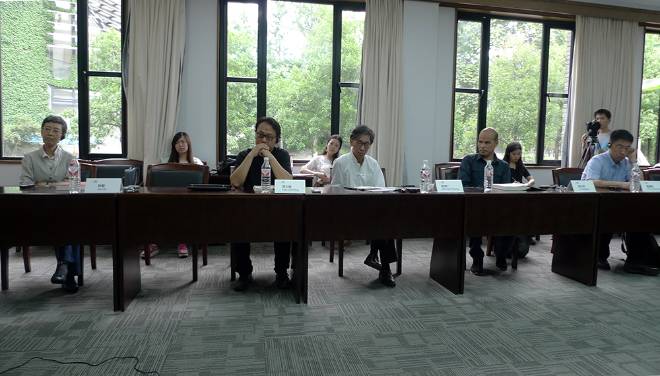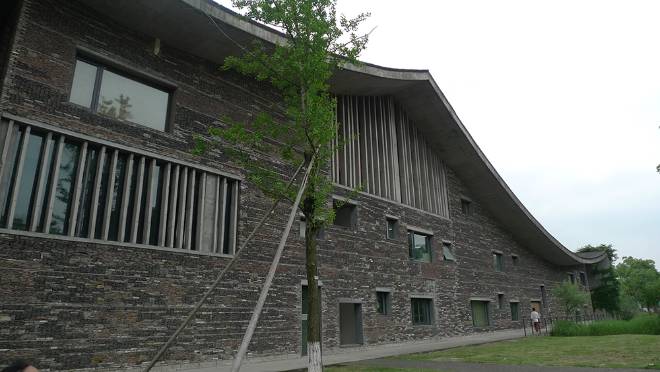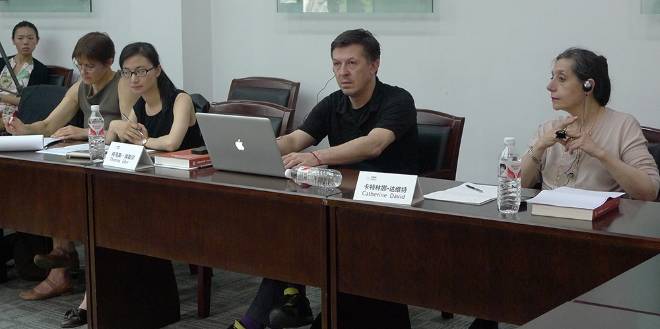The Elysée Treaty and Curatorial Strategies of Reconciliation
On the occasion of the 50th anniversary of the Elysée Treaty, which ended a disastrous century of arch enmity between France and Germany, a very ambitious conference was held at the renowned China Academy of Arts in Hangzhou. Co-organized by the Goethe Institute and the Institut Français under the auspices of both the French and the German embassies, a fine roster of international curators, philosophers and artists discussed “Strategies of Reconciliation” in curatorial practice and beyond. The general idea, of course, was to use the unprecedented success of French-German relations as a precedent for the chronically inflamed situation between China and Japan. Without any Japanese scholars or curators attending, however, the two-day affair was heavily tilted in one direction. Additionally, there was a clear refusal by one of the keynote speakers, Sun Ge, a historian and professor at the Institute for Literature at the China Academy of Social Sciences to bite the bait. After describing and analyzing three memorial sites, among which the contentiously nationalist Yasukuni Shrine in Japan and a memorial for the re-unification of North and South Korea, she hazarded the thought that the relationship between China and Japan would best be described in analogy to the mid-20th Century German–Jewish relationship, a notion that brought out the worst anti-Semitic misunderstandings in the attending Chinese student body.
It became painfully clear that they viewed the Jewish population as a separate race that had financially plundered Germany — and it took the author of this text quite some effort to refute all these notions. What remained however and also flared up again on the following day of closed-door discussions was the open wound in China’s flesh. One of the professors present wouldn’t stop quoting Plato’s “The Art of War.” All of this coincided with Prime Minister Li Keqiang’s visit in Schloss Cecilienhof near Potsdam (where the Allied Forces negotiated the new world order after WWII), calling on Japan to return Chinese territory.
Every once in a while someone appealed to reason and reminded everybody of the subject of the conference, “Strategies of Reconciliation.” Peter Anders, director of the Goethe Institute Beijing, in particular tried to keep the focus on curatorial practices. Catherine David, the curator of Documenta X, talked about her extensive experience with artists in the Middle East, and Algeria in particular as a current conflict zone, with whom she has been negotiating since the 1990s. David was an early pioneer in the “re-mapping” of the world after the end of the cold war, shifting collective attention towards areas of the world that had been omitted by modernism’s centers in the first world.
This thrust the discussion deep into the realms of Post-Colonial Studies, which prompted Gao Shiming, multiple co-curator of Shanghai Biennales to respond with a statement that clarified that imperialism is still very much alive everywhere on the planet. He suggested viewing “reconciliation” not as a solution but “as” the strategy itself to enter into a world beyond post-colonialism. Curatorial practices would then serve to provide platforms on which this could be played out. Lu Xinghua, professor of philosophy at Tongji University, deemed this unsatisfactory as a) an apology for wartime crimes from Japan is still missing, and b) memories by different parties always continue to fight one another, so c) there must be a concerted effort by the curator to strategically align such content in order to create new policies, begging the question “which policies?”
Catherine David immediately stepped up to defend independent curatorial practices as something that may never be co-opted by political agendas of states. The relevance of art, she claimed, lies in the subtlety of artistic production that is deeply immersed in the social and political realms abd yet is highly idiosyncratic. “Take risks! Be precise!” was her mantra throughout the conference.
She was followed by Johnson Chang, the well-known founder of Hanart TZ and a Shanghai Biennale organizer, mobilizing what he called the “moment of the contemporary” as resistance against modernism and the history it has repressed. Reflecting back on how the Cultural Revolution had forced China to adopt modernism, he wondered whether to deem that an invasion or a colonization became part of China’s “genetic code,” a metaphor he used repeatedly to underscore the depth of the substantial change China underwent since the Communist Revolution. Lu Xinghua responded in agreement, calling the “moment of the contemporary” the only space where reconciliation could happen — however only if China pushed itself into what he called a position of “cosmopolitanism.” This trope served as a springboard for Gao Shiming’s passionate statement for an “upgraded system of art.” After accusing post-colonial discourse of failing to gauge the impact of capital on the process of globalization, as leading the whole world straight into neo-liberalism, he called for curatorial practices that are to serve as “rehearsals” at which artists no longer should “narrate” and “engage” their “audiences.” Those who think they can do all that and replace the social context will just find themselves exactly being part of it. Curation, to his view, is not organization; it is mobilization, a link-up between the individual and the whole of society. A curator has to call up the energy of everybody, the energies of imagination — artists should talk about the whole of society beyond conventional practices. “This is a mental moment!” he said and called for liberation and emancipation.
Jehanne Dautrey’s contribution unfortunately was completely lost in translation. As the conference — unusually for an official French-German meeting — was held in English and Chinese in order to facilitate an easier translation into Chinese, her speech was conducted in French, first translated into Mandarin and then from Mandarin into English.
In closing the two days of intense conversations Gao Shiming reminded everybody that in accountant language, reconciliation means the checking of your bills against your accounts. That which cannot be reconciled will be presented again; in the end there is always someone how has to pay the bills…and then he went off to a budget meeting of his university.
Participants:
Catherine David (curator, art historian), Sun Ge (professor at the Institute for Literature at the China Academy of Social Sciences), Johnson Chang (curator, guest professor at China Academy of Arts), Gao Shiming (dean of the School of InterMedia Arts, China Academy of Arts), Lu Xinghua (philosopher, Tongji university) , Jehanne Dautrey (philosopher), Kai Tuchmann (theater and film director), Li Xu (philosopher, Zhejiang Academy for Social Sciences) , Thomas Eller (artist, curator). Zhou Shiyan (dean of the Faculty of Visual Culture, at the China Academy of Arts), Zheng Bo (artist, professor at the School of InterMedia Arts, China Academy of Arts) , Zhou Zhan’an (professor at the Institute for Language, Shanghai University).
2013.06.06 Thu, by Thomas Eller Translated by: 顾灵 Check out Randian website here




 Back to Index
Back to Index